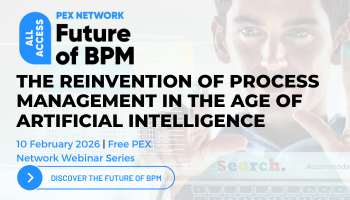The Seven A3 Problem Solving Steps in Detail
Learn the seven steps to undergo A3 problem solving
Add bookmarkAs I introduced A3 problem solving in my last column, I will now discuss in detail the steps involved with this problem solving approach.
Background of A3 Problem Solving
A3 problem solving is quite similar to other problem solving approaches which mirror Deming’s Plan-Do-Check-Act (PDCA) cycle. The comparison between A3 problem solving and PDCA is depicted in Table 1.
Table 1
| A3 Steps | PDCA Cycle |
| Background | Plan |
| Problem Statement | |
| Goal Statement | |
| Root Cause Analysis | |
| Countermeasures | Do |
| Effect Confirmation | Check |
| Follow Up Actions | Act |
Join the PEX Network community

Don't miss any news, updates or insider tips from PEX Network by getting them delivered to your inbox. Sign up to our newsletter and join our community of experts.
Learn MoreA3 Problem Solving Steps
Using a very simple approach, A3 problem solving is composed of the following seven steps shown below.
Step 1: Background
In this step, you make the business case for selecting a particular problem for resolution. Upon your selection, clearly state how the problem impacts the strategic business objectives around customers, process, financials, new products, etc.
Step 2: Problem Statement
Detail the specifics of the problem. These may include the magnitude of the problem, where and when the problem occurred, and the problem’s impact on the business. By defining these specifics on a quantitative scale, you help to bring the problem to life for your organization.
Step 3: Goal Statement
In this step, state what you are trying to accomplish by initiating the A3 problem solving project. Map out what goals you are trying to achieve and set a timeframe for completing these goals.
Join the PEX Network community

Don't miss any news, updates or insider tips from PEX Network by getting them delivered to your inbox. Sign up to our newsletter and join our community of experts.
Learn MoreStep 4: Root Cause Analysis
Having fully defined the problem, carry out a root cause analysis to determine the most basic reasons of your problem. Be as thorough as possible.
Step 5: Countermeasures
With the root causes in place, come up with the countermeasures that you will use to reach your objective in solving the problem. Draw up a detailed plan that outlines who will deploy the countermeasures and when this deployment will be completed. Following the 5WIH structure helps in this step.
Step 6: Effect Confirmation
Having implemented the countermeasures, look at the results. Determine whether the results indicate that your countermeasures were effective in meeting your objective.
Step 7: Follow Up Action
Having achieved your results, deploy the infrastructure for sustaining the gains (such as standardization, audits, dashboards and reviews). Make sure that you roll out your findings across the organization, which in Japanese is called yoko-narabi-tenkai, meaning "lateral deployment of findings to other groups." (Click on image to enlarge.)
Conclusion
A3 problem solving may appear to be a simple seven step approach which helps in solving business problems. However, it is not that simple. It requires the right context and conditions. In a subsequent column, I will share the Dos and Don’ts of A3 problem solving and will show how you can apply its tools to service processes.
All Access: Future of BPM 2026

You asked, and we listened. Business process management (BPM) remains the cornerstone technology for driving organizational transformation, according to the survey results featured in the latest PEX Report. As we look toward 2026 and beyond, generative AI, agentic AI, and intelligent process orchestration are redefining how processes are designed, executed, and optimized. BPM is your key to adapting swiftly and effectively in this new era.
PEX Network is bringing together industry leaders, technology innovators, and thought leaders to answer your biggest questions and explore the advancements reshaping business today. And you're invited. Register for free to save your spot now!
Register Now




















